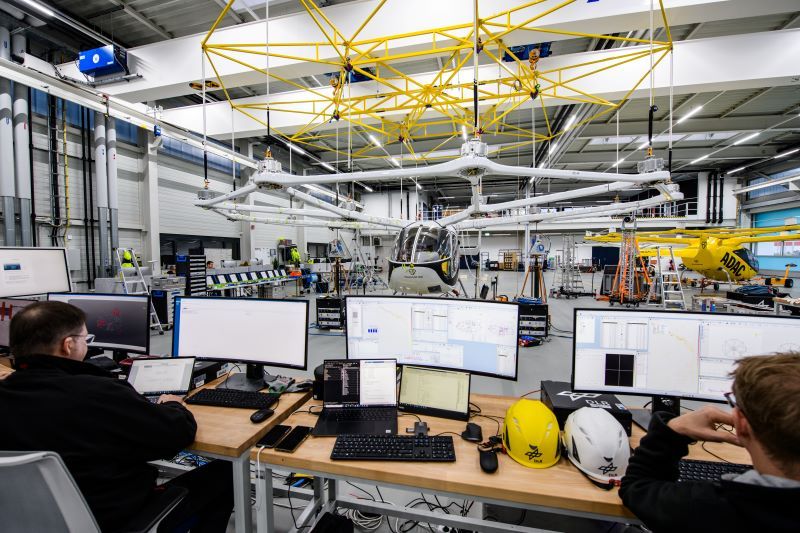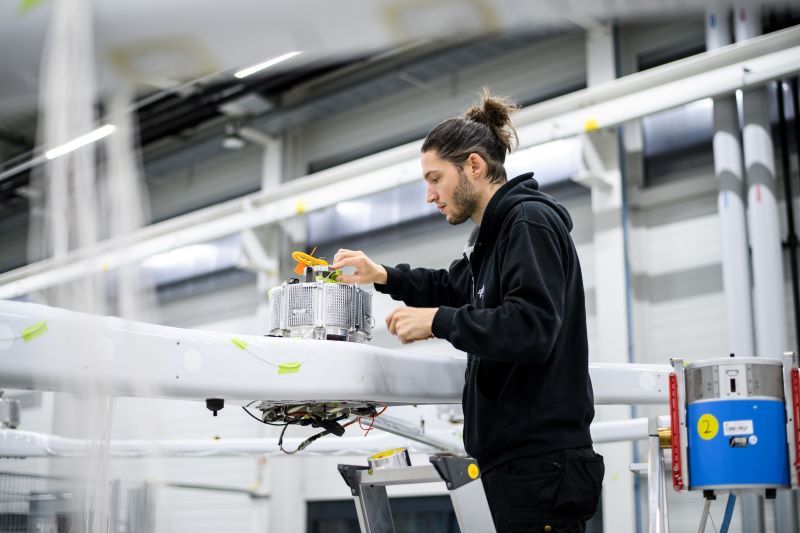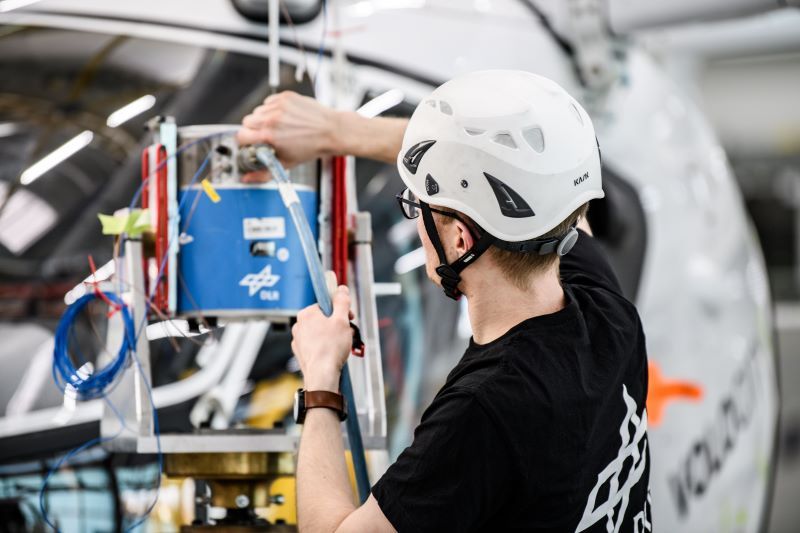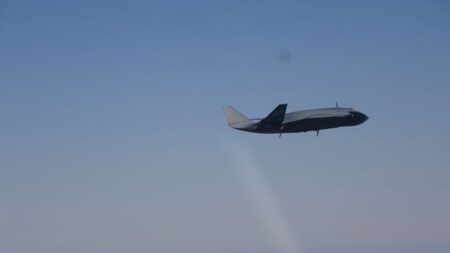Volocopter has completed the ground vibration testing of its VoloCity eVTOL aircraft, working in partnership with German aerospace research agency DLR.
Volocopter plans to begin commercially operating its two seat all-electric VoloCity this year, providing short flights in urban areas. The 18-rotor eVTOL aircraft has a range of 22 miles (35km) and a top speed of 69mph (110km/h).
The VoloCity is expected to debut alongside other eVTOL aircraft at the Paris Olympics in July and be used to transport athletes and dignitaries using five vertiports spread across the city.
The ground vibration test (GVT) program was run over five days during January at a Volocopter facility in Bruchsal, Germany. The test program involved eight Volocopter engineers and six from DLR. The close collaboration of the engineers from Volocopter and DLR during the planning and execution of the test was fundamental in achieving success.
The aircraft used for the tests is a prototype constructed for flight test but is essentially the production aircraft modified with test equipment.
The GVT provided engineers with crucial data about the dynamic structure properties of the completed Volocopter aircraft. This data is being used to validate and adjust models and simulate all of the conditions needed.

Keith Soal, a mechanical engineer at DLR said, “We installed 210 sensors onto the structure and used electrodynamic shakers to excite it with different signals. These signals bring the structure into motion in a way that enables engineers to understand its dynamic behavior.
The GVT is also a required part of certification testing. Hugo Nunes, aircraft dynamics manager, Volocopter said, “These tests are an important milestone for Volocopter and one more step toward the certification of the VoloCity.
“We use several mathematical models to estimate the dynamic behavior of the aircraft in flight or on the ground, but they are theoretical. We need tests like these to validate those models and then we can demonstrate the aircraft is stable.
“Next we will fly the aircraft and repeat these kinds of vibration tests for the final confirmation that the aircraft is stable.”
The collaboration between Volocopter and DLR has grown over the past years based on the value of the work.
DLR provides structural dynamic testing to several aerospace companies and has expertise and tools for vibration testing. “The partnership in terms of understanding and solving challenges regarding aircraft dynamics of future urban air mobility is very important,” said Volocopter.
While the GVT process for eVTOL aircraft is similar to that of a fixed-wing aircraft, the mode shapes are different for an eVTOL with a distributed electric propulsion system. The sensor setup and excitation plan must be tailored to the unique geometry of the VoloCity to provide an accurate dynamic characterization of the structure.
Engineers were most interested in the dynamic characterization of electric propulsion motors on the structurally elastic rotorplane, this was the most important part for the dynamic characterization on the VoloCity.

Test setup
The suspension system used consisted of elastic bungee cords to allow the aircraft to obtain boundary conditions similar to those in flight. The distributed bungee system was first introduced to the eVTOL sector through DLR-Volocopter collaboration in 2021. It has proved important in correctly characterizing the aircraft dynamics due to the effects of the static forces on the rotor ring during hover flight.
Special vibration exciters were installed in the aircraft for the tests. The prototype is equipped with vibration sensors distributed along the structure. The data is recorded on its onboard test recording system and also transmitted to the telemetry stations. Several test flights will happen, in different flight conditions, to cover the whole design flight envelope.
Despite the unique nature of the testing, engineers found the results very similar to computer modeling predictions. Flight tests will now follow an overall test schedule and will include flutter testing.
“In general, the simulation model agreed well with the measured data-driven model. Furthermore, during the test, the simulation model was able to be fine-tuned and updated to match the measured reality even better,” said Volocopter.





